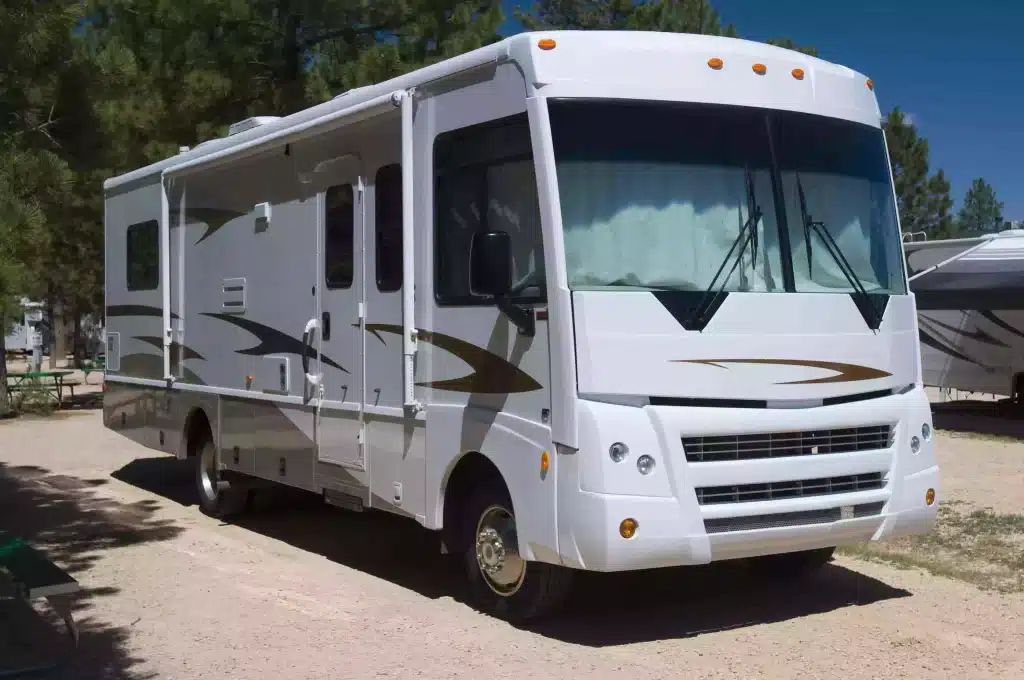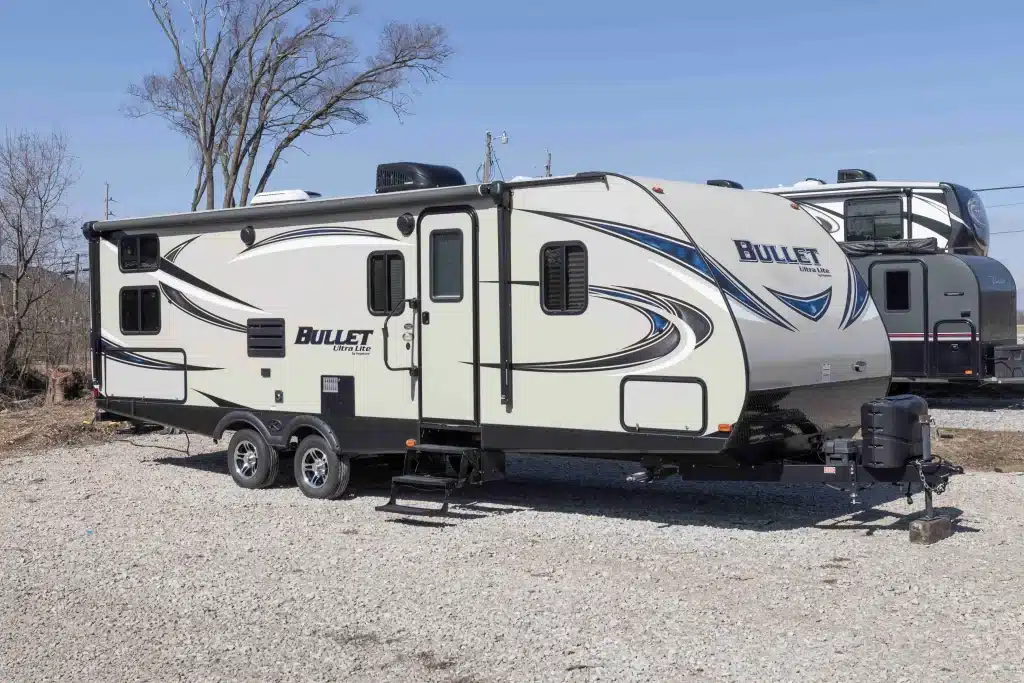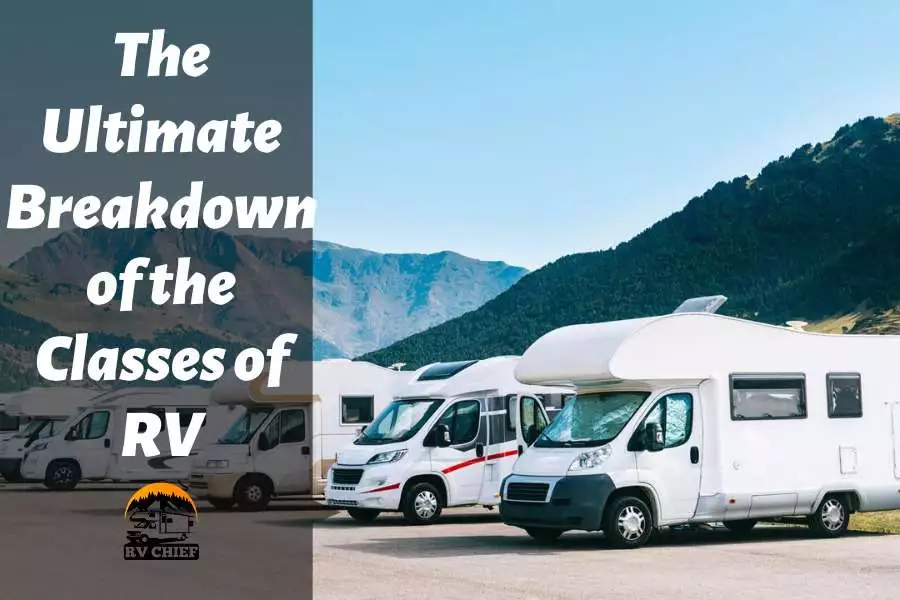Traveling on the open road has never been so versatile, thanks to the different classes of RV available to modern adventurers. But understanding the different classes of RV can be a winding journey of its own. Now, to the big question: “What are the classes of RVs?”
Generally, there are different classes of RV classified into three main categories: Class A, Class B, and Class C. Class A RVs are the largest and most luxurious; Class B RVs are compact and versatile; and Class C RVs offer a balance of amenities and maneuverability. Each class has unique features, size ranges, uses, and target audiences. And they all represent a unique blend of comfort, style, and versatility.
From the compact and elegant to the grand and luxurious, the classes of RVs are tailored to suit every traveler’s yearning for the extraordinary. By understanding the different classes of RVs, you can select the one that best suits your travel style, desired amenities, and overall preferences.
Table of Contents
- 1 What are the Different classes of RV?
- 2 Different Classes of RV: Towable RV Trailers
- 3 What is the difference between a Class B and a Class B+ RV?
- 4 What is a class A RV?
- 5 What are class B RVs?
- 6 What is a Class B+ RV?
- 7 What is a Class C RV?
- 8 Is my RV a Class A or C?
- 9 Choosing the Right Class of RV for Your Needs
What are the Different classes of RV?
The world of recreational vehicles is vast and varied, with different classes of RV tailored to every kind of traveler. Each comes in various classes and types to suit different needs and preferences.
Some of the classes of RV are Class A, Class B, and Class C. Each class offers unique features and advantages, catering to different travel styles and requirements.
- Class A RVs are the largest and most luxurious, resembling a bus-like structure and offering ample living space and amenities.
- Class B RVs, also known as camper vans, are compact and versatile, built on a van chassis with amenities for comfortable travel.
- Class C RVs are a mid-sized option featuring a distinctive cab-over design, often with a sleeping area above the driver’s compartment. They provide a balance of amenities and maneuverability.
Class A RV (Largest Motorhome)

- Length: 29 to 45 feet (7.9 to 13.7 meters) in length
- Height: 10 to 13.5 feet (3 to 4.1 meters)
- Weight: 20,000 to 40,000 pounds (9,000 to 18,000 kilograms) or more.
Class A RVs offer a wide array of amenities and living spaces. The interior is designed to maximize comfort and convenience. It often includes a spacious living area with comfortable seating, entertainment systems, and large windows for panoramic views.
This type of RV often has separate sleeping quarters, including a master bedroom with a queen or king-size bed, wardrobe storage, and sometimes a washer and dryer.
Additional amenities include:
- Heating and air conditioning systems
- Power awnings
- Slide-out sections that expand the living space
- Built-in generators and advanced technology systems.
Due to its size and weight, driving a Class A RV requires a special driver’s license in some jurisdictions. However, these motorhomes provide a spacious and comfortable living environment once parked.
Making them a popular choice for full-time RVers or those seeking a luxurious home on wheels.
Class B RV (Camper Van)

- Length: 16 to 22 feet (4.9 to 6.7 meters)
- Height: 7 to 9 feet (2.1 to 2.7 meters)
- Weight: Between 6,000 and 10,000 pounds (2,700 and 4,500 kilograms)
The Class B RV is one of the classes of RVs with a compact and versatile design. They provide the convenience of a motorhome in a smaller package.
These types of RV are built on a van chassis, which offers mobility, ease of driving, and efficient fuel consumption. Despite its compact size, a Class B RV is designed to maximize functionality.
It has various amenities, like:
- Heating and air conditioning systems
- Freshwater and wastewater tanks
- Electrical systems with batteries or generators
- Entertainment options like TV and audio systems.
Due to its smaller size, a Class B RV offers excellent maneuverability, making navigating narrow roads and parking lots easier. It provides the freedom to explore both urban areas and natural landscapes comfortably.
Some models offer additional features like awnings, exterior storage compartments, and solar panels for energy efficiency.
Overall, the Class B RV is a versatile and self-contained vehicle that offers a compact and efficient camping experience.
Class B plus RV (Class B plus Motorhome)

- Length: 22 to 30 feet (6.7 to 9.1 meters)
- Height: 10 to 12 feet (3 to 3.6 meters)
- Weight: 8,000 to 12,000 pounds (3,600 to 5,400 kilograms)
The Class B Plus RV offers a combination of comfort and maneuverability. It is built on a van chassis, typically larger than a traditional Class B camper van but smaller than a Class C motorhome.
The interior of a Class B+ RV is designed to maximize space efficiency. It typically includes a small kitchenette with a refrigerator, stove, sink, and storage cabinets.
It is worth noting that the bathroom may have a toilet, sink, and shower. The main living area can feature a dinette or sofa that can convert into a bed, allowing for sleeping accommodations.
Other amenities commonly found in Class B+ RVs include:
- Heating and air conditioning systems.
- Freshwater and wastewater tanks.
- Electrical systems with batteries or generators for power.
Class B+ RVs also offer better fuel efficiency compared to larger models, and their compact size allows for greater flexibility regarding campsite selection.
Class C RV Motorhome

- Length: 20 to 32 feet (6 to 9.7 meters)
- Height: 10 to 12 feet (3 to 3.6 meters)
- Weight:10,000 to 14,000 pounds (4,500 to 6,350 kilograms)
The Class C RV is popular among camping and road trip enthusiasts. Combining the convenience of a motorhome with the maneuverability of a smaller vehicle, it offers a range of features and amenities for comfortable travel.
Inside the main living area, you’ll find a variety of amenities.
These can include:
- A kitchenette equipped with a refrigerator
- Stove
- Oven
- Microwave and sink.
The dining area typically has a table and seating, which you may convert into an additional sleeping space. The bathroom usually includes a toilet, sink, and shower.
The RV may have heating and air conditioning systems to ensure comfort in various weather conditions. It may also include a freshwater tank, a grey tank for wastewater, and a black tank for sewage.
Power options can consist of a generator and electrical hookups for campground connections.
Different Classes of RV: Towable RV Trailers
These are another popular option for travel enthusiasts, providing flexibility and convenience. Towable RV trailers are categorized into different classes based on size, weight, and features.
The classes of towable RV trailers include:
- Travel trailers
- Toy haulers
- Pop-up trailers
- Truck campers
- Fifth-wheel trailers
Travel trailers are the most popular type, ranging from compact units to larger models with various amenities. Fifth-wheel trailers have a unique hitch design that attaches to a truck bed, offering increased stability and often more living space.
Toy haulers are designed with a garage space at the rear, allowing you to bring recreational vehicles or gear. Each class offers distinct advantages and considerations, catering to different travel needs and preferences.
Travel trailers

Travel trailers are a popular class of towable RV trailers that offer various options for camping and travel adventures. These trailers come in different sizes, ranging from compact units to spacious models with multiple slide-outs.
One of the advantages of travel trailers is their versatility. They can be towed by SUVs, trucks, and even larger sedans, making them accessible to a broader range of travelers.
However, the size and weight of travel trailers vary, but they generally offer a comfortable living space with amenities such as sleeping areas, kitchenettes with appliances, and storage compartments.
These trailers can be an excellent option for families, couples, or solo travelers seeking the comforts of a traditional RV with the convenience of towing.
They provide a comfortable and customizable living space for camping trips, road adventures, or long-term stays at campgrounds or RV parks.
Toy haulers

These are a unique and versatile class of towable RV trailers designed for adventurers who want to bring their recreational vehicles and gear along on their trips.
Toy haulers feature a dedicated garage space at the rear, typically accessible through a ramp door, allowing you to bring motorcycles, ATVs, bikes, or other toys with you.
These types of RV trailers give you the option to transform the garage area into a multi-purpose space. It can serve as a living area, additional sleeping space, or even a mobile office when not used for storing vehicles.
The front portion of toy haulers resembles a conventional travel trailer, offering amenities such as sleeping areas, kitchenettes, bathrooms, and dining spaces.
It is worth noting that the size and layout of the living area vary, providing options for individuals, couples, or larger families.
Pop-up trailers

Pop-up trailers, also known as tent trailers or folding campers, are towable RV trailers. They are also one of the classes of RVs that offer a unique camping experience.
These types of RV trailers are characterized by their collapsible design. This allows you to easily tow and store things while providing expanded living space when unfolded.
One of the advantages of pop-up trailers is their versatility. They are often lighter and more affordable compared to other RV options, making them suitable for towing with a wide range of vehicles.
The collapsible design also allows for convenient storage in garages or tight spaces when not in use.
They are a popular choice for campers who enjoy a mix of tent camping and RV comforts, as they provide a balance between the two.
Overall, pop-up trailers are an excellent choice for those looking for a compact and versatile RV option that combines convenience, affordability, and the joy of camping under canvas.
Truck campers

Truck campers, also known as slide-in campers or pickup campers. These types of RVs are designed to be loaded onto the bed of a pickup truck.
They are compact and versatile campers that provide a unique camping experience with the convenience of a truck as the base.
Despite their compact size, truck campers offer a lot of living space. They typically include a sleeping area, a kitchenette, and a small bathroom with a toilet and shower.
One of the advantages of truck campers is their excellent maneuverability and off-road capabilities. Being mounted on a pickup truck, they can navigate narrow roads and access remote camping spots that may be challenging for larger RVs.
Truck campers are popular with adventurers who want to explore off-the-beaten-path destinations and enjoy a more rugged camping experience. They also offer better fuel efficiency compared to motorized RVs.
Fifth wheels

Fifth wheels are towable RV trailers that offer spacious living accommodations and enhanced stability during towing. These types of RV trailers are designed to be towed by pickup trucks with a special hitch.
The special hitch is called a fifth-wheel hitch, which is mounted in the truck’s bed.
Fifth wheels are known for their unique layout, featuring a raised forward section extending over the truck’s bed. This design increases interior height and includes additional living space, such as a master bedroom, living area, kitchen, and bathroom.
They provide a luxurious and residential feel, making them a popular choice for full-time living or extended vacations. Their unique hitch design and generous living space set them apart as a premium option among towable RV trailers.
What is the difference between a Class B and a Class B+ RV?
The main difference between a Class B and Class B+ RV lies in their size and design. Class B RVs are compact camper vans built on a van chassis, while Class B+ RVs are slightly larger and feature an extended van or small truck chassis.
Class B+ RVs typically have a raised roofline or an over-the-cab sleeping area, providing additional headroom or sleeping space. This allows for a more spacious interior compared to Class B RVs.
In addition, Class B+ RVs also offer more amenities and storage options, making them popular for travelers who desire more space and comfort without stepping up to a full-size Class C motorhome.
What is a class A RV?
A Class A RV is a large, luxurious motorhome resembling a bus-like structure. It is the largest RV class, providing spacious interiors, high-end amenities, and a wide range of features for a comfortable and luxurious travel experience.
What are class B RVs?
Class B RVs, called camper vans, are compact motorhomes built on van chassis. They offer a versatile and maneuverable option for travelers.
Class B RVs typically feature basic amenities such as sleeping quarters, a kitchenette, and a small bathroom, making them ideal for adventurous individuals or couples seeking a relaxing and functional travel experience.
What is a Class B+ RV?
A Class B plus RV, also known as a Class B+ motorhome, is a hybrid between a Class B and a Class C RV. It offers a larger living space than a traditional Class B with an extended van or small truck chassis.
Class B+ RVs often feature an over-the-cab sleeping area and additional amenities for increased comfort and convenience.
What is a Class C RV?
A Class C RV is a motorhome built on a cutaway van or truck chassis. It features a distinctive cab-over design with an additional sleeping or storage area above the driver’s compartment.
Class C RVs offer a range of amenities and are popular among small families or groups seeking comfort and convenience on their travels.
Is my RV a Class A or C?
Consider the structure and size to determine if your RV is a Class A or C. If your RV resembles a bus-like design with a large and boxy structure, it is likely a Class A RV.
If it has a van-like appearance with a distinctive cab-over section, it is likely a Class C RV.
Choosing the Right Class of RV for Your Needs
Choosing the suitable RV class is an important decision that depends on your specific needs, preferences, and travel style.
Class A RVs are ideal for those seeking the ultimate in luxury and space. They offer expansive interiors, high-end amenities, and a home-like experience. This type of RV is suitable for long trips or full-time living and is best for travelers who prioritize comfort and are willing to invest in a larger vehicle.
Class B RVs, also known as camper vans, are compact and versatile. They offer maneuverability, ease of driving, and better fuel efficiency. Class B RVs are suitable for solo travelers or couples who prefer a smaller vehicle with basic amenities for camping and short trips.
Class C RVs provide a balance between space and maneuverability. With their distinctive cab-over design, they offer additional sleeping or storage space. Class C RVs are suitable for small families or groups who desire more amenities and comfort than a Class B RV but don’t require Class A size.
Consider factors such as the number of people traveling, desired amenities, budget, and ease of driving when choosing an RV class. Additionally, think about the destinations you plan to visit, as larger RVs may have limitations on accessing certain roads or campsites.


